Ordinary Differential
Equations with
Applications
Carmen Chicone
Springer
�
�
�
�
�
To Jenny, for giving me the gift of time.
�
Preface
This book is based on a two-semester course in ordinary differential equa-
tions that I have taught to graduate students for two decades at the Uni-
versity of Missouri. The scope of the narrative evolved over time from
an embryonic collection of supplementary notes, through many classroom
tested revisions, to a treatment of the subject that is suitable for a year (or
more) of graduate study.
If it is true that students of differential equations give away their point of
view by the way they denote the derivative with respect to the independent
variable, then the initiated reader can turn to Chapter 1, note that I write
, and thus correctly deduce that this book is written with an eye
˙x, not x
toward dynamical systems. Indeed, this book contains a thorough intro-
duction to the basic properties of differential equations that are needed to
approach the modern theory of (nonlinear) dynamical systems. However,
this is not the whole story. The book is also a product of my desire to
demonstrate to my students that differential equations is the least insular
of mathematical subjects, that it is strongly connected to almost all areas
of mathematics, and it is an essential element of applied mathematics.
When I teach this course, I use the first part of the first semester to pro-
vide a rapid, student-friendly survey of the standard topics encountered in
an introductory course of ordinary differential equations (ODE): existence
theory, flows, invariant manifolds, linearization, omega limit sets, phase
plane analysis, and stability. These topics, covered in Sections 1.1–1.8 of
Chapter 1 of this book, are introduced, together with some of their im-
portant and interesting applications, so that the power and beauty of the
subject is immediately apparent. This is followed by a discussion of linear
�
viii
Preface
systems theory and the proofs of the basic theorems on linearized stabil-
ity in Chapter 2. Then, I conclude the first semester by presenting one
or two realistic applications from Chapter 3. These applications provide a
capstone for the course as well as an excellent opportunity to teach the
mathematics graduate students some physics, while giving the engineering
and physics students some exposure to applications from a mathematical
perspective.
In the second semester, I introduce some advanced concepts related to
existence theory, invariant manifolds, continuation of periodic orbits, forced
oscillators, separatrix splitting, averaging, and bifurcation theory. However,
since there is not enough time in one semester to cover all of this material
in depth, I usually choose just one or two of these topics for presentation in
class. The material in the remaining chapters is assigned for private study
according to the interests of my students.
My course is designed to be accessible to students who have only stud-
ied differential equations during one undergraduate semester. While I do
assume some knowledge of linear algebra, advanced calculus, and analysis,
only the most basic material from these subjects is required: eigenvalues and
eigenvectors, compact sets, uniform convergence, the derivative of a func-
tion of several variables, and the definition of metric and Banach spaces.
With regard to the last prerequisite, I find that some students are afraid
to take the course because they are not comfortable with Banach space
theory. However, I put them at ease by mentioning that no deep properties
of infinite dimensional spaces are used, only the basic definitions.
Exercises are an integral part of this book. As such, many of them are
placed strategically within the text, rather than at the end of a section.
These interruptions of the flow of the narrative are meant to provide an
opportunity for the reader to absorb the preceding material and as a guide
to further study. Some of the exercises are routine, while others are sections
of the text written in “exercise form.” For example, there are extended ex-
ercises on structural stability, Hamiltonian and gradient systems on man-
ifolds, singular perturbations, and Lie groups. My students are strongly
encouraged to work through the exercises. How is it possible to gain an un-
derstanding of a mathematical subject without doing some mathematics?
Perhaps a mathematics book is like a musical score: by sight reading you
can pick out the notes, but practice is required to hear the melody.
The placement of exercises is just one indication that this book is not
written in axiomatic style. Many results are used before their proofs are pro-
vided, some ideas are discussed without formal proofs, and some advanced
topics are introduced without being fully developed. The pure axiomatic
approach forbids the use of such devices in favor of logical order. The other
extreme would be a treatment that is intended to convey the ideas of the
subject with no attempt to provide detailed proofs of basic results. While
the narrative of an axiomatic approach can be as dry as dust, the excite-
ment of an idea-oriented approach must be weighed against the fact that
�

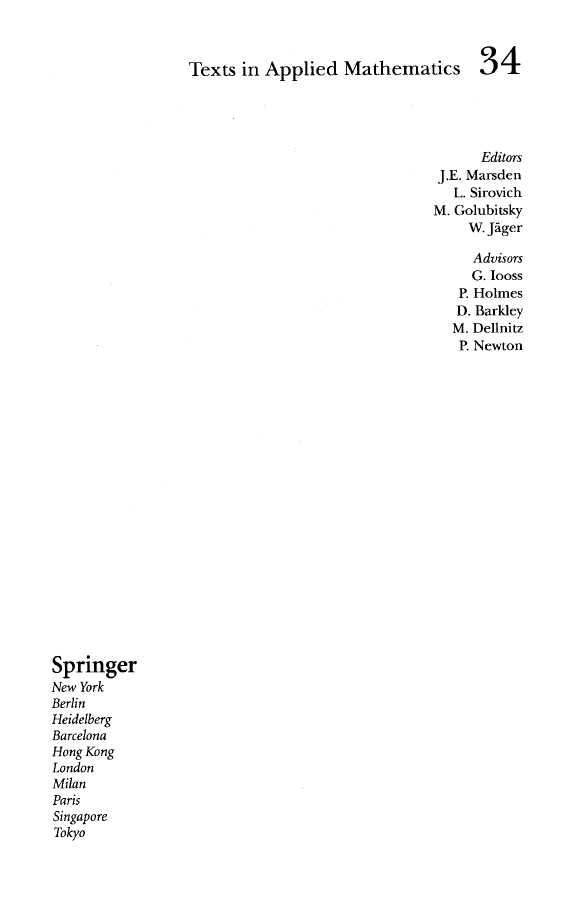
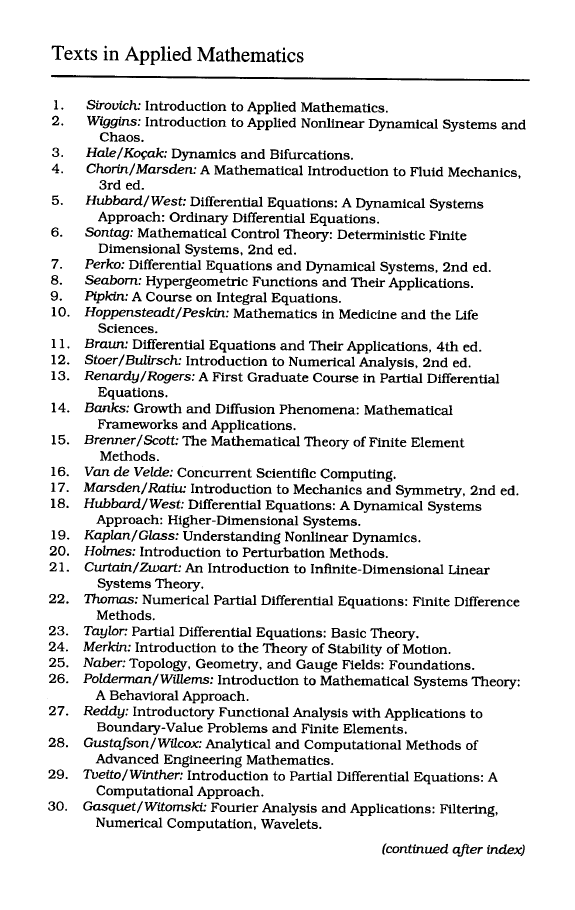
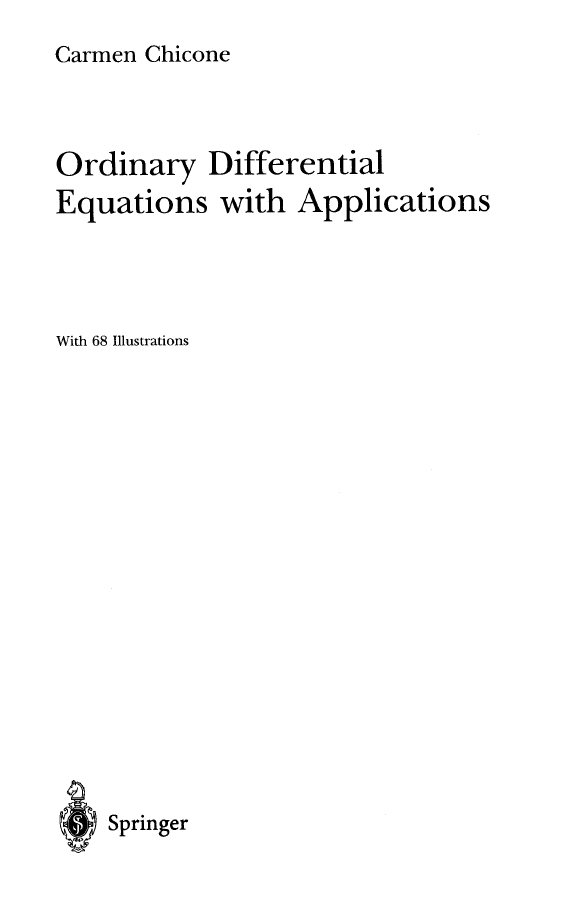


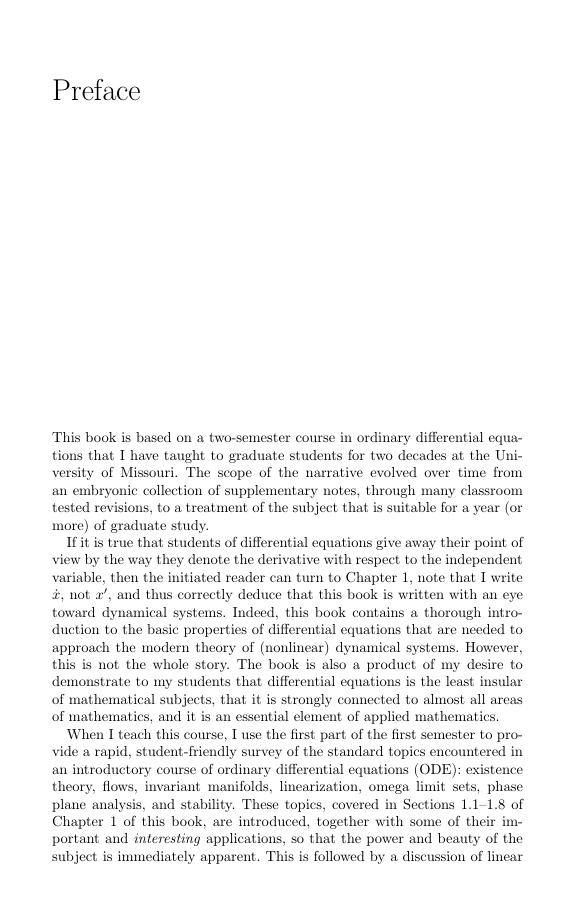
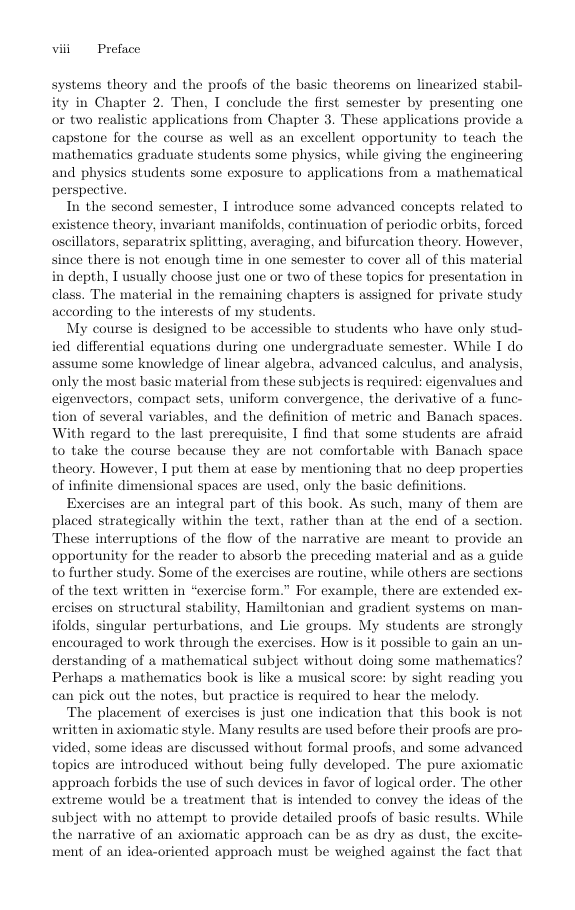








 2023年江西萍乡中考道德与法治真题及答案.doc
2023年江西萍乡中考道德与法治真题及答案.doc 2012年重庆南川中考生物真题及答案.doc
2012年重庆南川中考生物真题及答案.doc 2013年江西师范大学地理学综合及文艺理论基础考研真题.doc
2013年江西师范大学地理学综合及文艺理论基础考研真题.doc 2020年四川甘孜小升初语文真题及答案I卷.doc
2020年四川甘孜小升初语文真题及答案I卷.doc 2020年注册岩土工程师专业基础考试真题及答案.doc
2020年注册岩土工程师专业基础考试真题及答案.doc 2023-2024学年福建省厦门市九年级上学期数学月考试题及答案.doc
2023-2024学年福建省厦门市九年级上学期数学月考试题及答案.doc 2021-2022学年辽宁省沈阳市大东区九年级上学期语文期末试题及答案.doc
2021-2022学年辽宁省沈阳市大东区九年级上学期语文期末试题及答案.doc 2022-2023学年北京东城区初三第一学期物理期末试卷及答案.doc
2022-2023学年北京东城区初三第一学期物理期末试卷及答案.doc 2018上半年江西教师资格初中地理学科知识与教学能力真题及答案.doc
2018上半年江西教师资格初中地理学科知识与教学能力真题及答案.doc 2012年河北国家公务员申论考试真题及答案-省级.doc
2012年河北国家公务员申论考试真题及答案-省级.doc 2020-2021学年江苏省扬州市江都区邵樊片九年级上学期数学第一次质量检测试题及答案.doc
2020-2021学年江苏省扬州市江都区邵樊片九年级上学期数学第一次质量检测试题及答案.doc 2022下半年黑龙江教师资格证中学综合素质真题及答案.doc
2022下半年黑龙江教师资格证中学综合素质真题及答案.doc